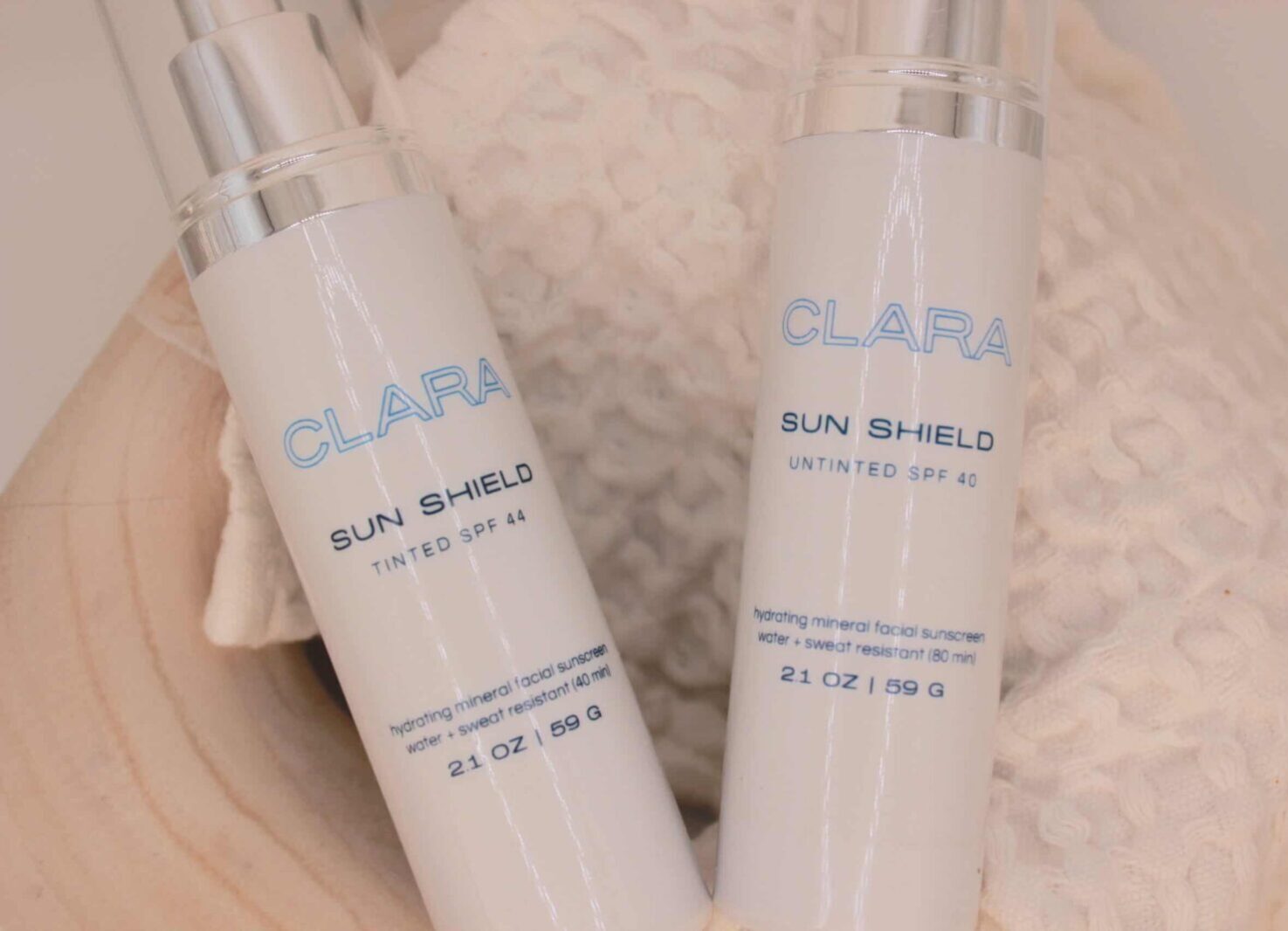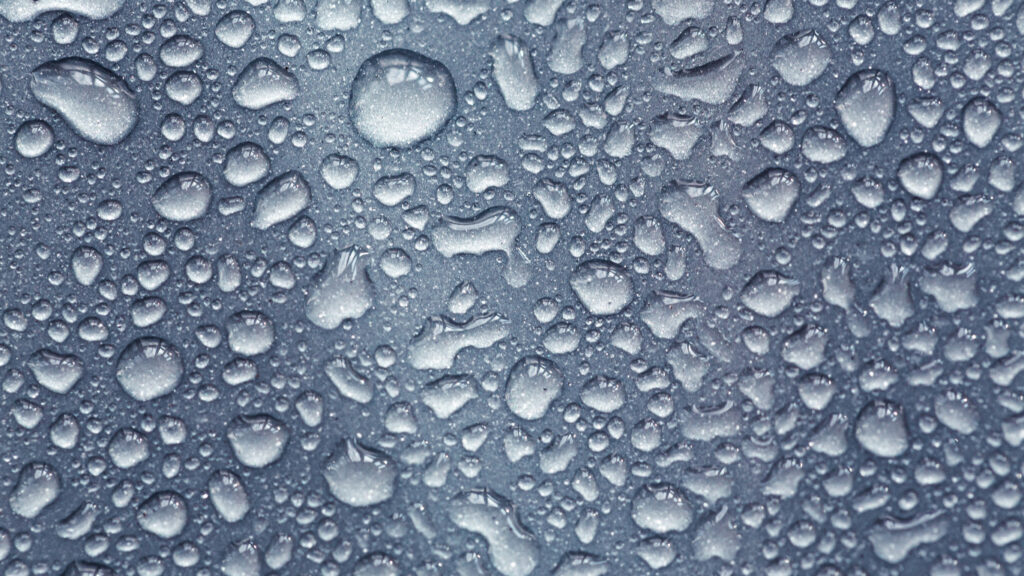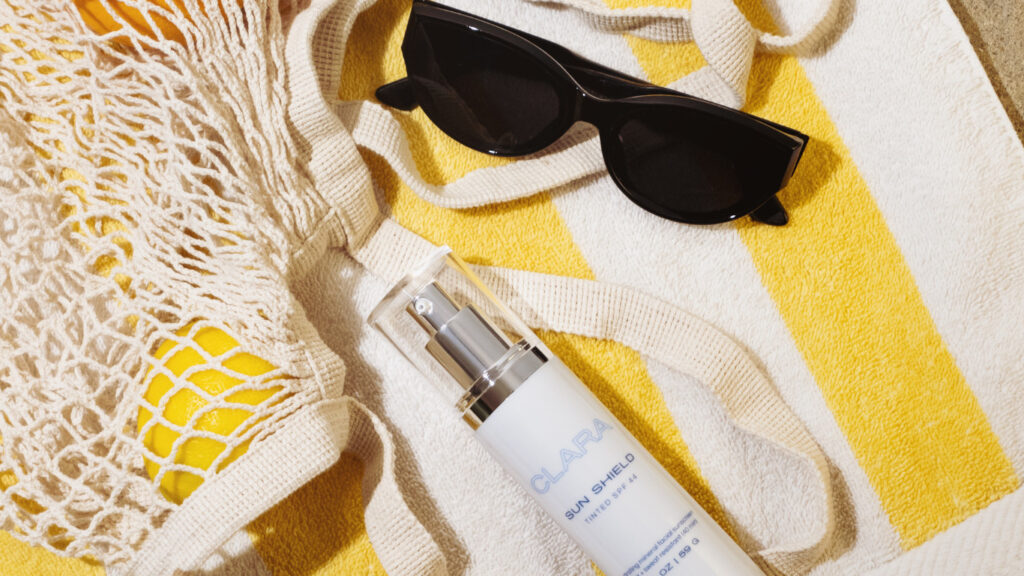
Sunscreen is an important part of an everyday skincare routine – let’s review why.
The sun emits harmful UV rays that damage the skin on a cellular level causing DNA mutations and degrading collagen and elastin. These effects accelerate the aging process and can cause skin cancer.
The good news is that sunscreen is your skin’s BFF and can help you reduce your risk of melanoma and other types of sun-related skin cancer.
UV rays from the sun reach our skin everyday – even on cloudy days! So, it is important to wear sunscreen everyday, sometimes you need to reapply throughout the day.
If you’re going to be spending the day outside, we recommend applying 15 minutes before your activity and reapplying at least once every 2 hours, but more frequently if you are swimming or sweating. Also, if you’re going to be in the water, make sure to use a water-resistant sunscreen and reapply every 80 minutes as their protection wears off significantly after this time.
Now that we’ve covered the “whys,” let’s talk about the different types of sunscreen. The two broad categories of sunscreen are chemical and physical. Chemical sunscreens absorb the sun’s rays, physical sunscreens reflect the sun’s rays, and combination sunscreens offer broad-spectrum protection. Here are the fine details:
Chemical sunscreens contain ingredients such as oxybenzone, avobenzone, octisalate, octocrylene, homosalate, and octinoxate, which absorb the sun’s rays as they reach the skin. The sunscreen needs to be applied at least 15-30 minutes before exposure to the sun, as it takes time for the ingredients to absorb into the skin. It’s important to reapply every two hours, or after swimming or sweating, as the ingredients can break down over time. Chemical sunscreens might be referred to as “sunscreen.”
Physical sunscreens, also known as mineral sunscreens, contain small particles of zinc oxide or titanium dioxide, which sit on the skin’s surface and reflect the sun’s rays so they cannot penetrate the skin. They are effective immediately upon application and are less likely to cause skin irritation than chemical sunscreens. They’re a great option for people with sensitive skin or allergies. Physical sunscreens might be referred to as “sunblock.”
What is SPF and does it really matter?
According to the FDA, “SPF is a measure of how much solar energy (UV radiation) is required to produce sunburn on protected skin (i.e., in the presence of sunscreen) relative to the amount of solar energy required to produce sunburn on unprotected skin. As the SPF value increases, sunburn protection increases.”
Let’s compare an SPF 30 and an SPF 50 sunscreen.
SPF 30 provides 97% protection against UVB rays, while SPF 50 provides 98% protection. This may seem like a small difference, but in reality, it means that SPF 50 provides slightly better protection and may be more suitable for people with fair or sensitive skin or those who are more susceptible to sunburn.
It’s important to note that no sunscreen can provide 100% protection against UV radiation, and both SPF 30 and SPF 50 require regular reapplication every two hours or after swimming or sweating.
Ultimately, the choice between SPF 30 and SPF 50 may depend on personal preference and skin type. If you have fair or sensitive skin or are more prone to sunburn, you may want to opt for SPF 50. However, if you have darker skin or are not as susceptible to sunburn, SPF 30 may be sufficient. Regardless of the SPF level, it’s important to apply sunscreen liberally and frequently to ensure maximum protection against UV radiation.
We usually recommend a daily SPF of at least 30 and SPF of 50 when you are going to be out more consistently (swimming, at the beach).
Are chemical sunscreens safe?
The majority of scientific evidence suggests that when used as directed, chemical sunscreens are safe and effective at protecting the skin from the sun’s harmful UV rays.
However, some people may be more sensitive to certain ingredients, and it’s possible to experience skin irritation or allergic reactions to chemical sunscreens. If you have sensitive skin or are concerned about the safety of chemical sunscreens, you may want to consider using physical sunscreens, which, again, use mineral-based ingredients such as zinc oxide or titanium dioxide to provide sun protection.
Is sunscreen the only way to protect my skin from the sun?
Another great addition to sun protection is barrier clothing, like wide-brimmed hats and sunshirts. Over the past 5-10 years, so many cute styles of hats and clothing have become available for all ages. We also recommend using shade when you are outside at peak UV strength, which is late morning to afternoon – or when your shadow is shorter that you.
The good news is that many great sunscreen options exist and they help
- Reduce your risk of developing skin cancer
- Prevent sunburn
- Decrease signs of early aging on your skin like wrinkles, age spots, and sagging skin
- Stop existing melasma from darkening and new patches from appearing
- Reduce the risk of dark spots appearing when acne, psoriasis, or another skin condition clears
At CLARA, we have 2 great daily sunscreens:
+ 100% mineral sunscreen in a hydrating base with a sheer, universal tint
+ Prevents sunburn, photoaging, fine lines and wrinkles
+ Light enough to wear under makeup; tinted enough to blur minor imperfections on its own
+ 100% mineral sunscreen shields skin from UVA and UVB rays with broad-spectrum protection
+ Bioflavenoids and glycoproteins sooth and revitalize the skin
+ Dimethicone creates a silk, smooth finish
+ Water + sweat resistant, 80 minutes.
Ready to get started?
Get your customized skin care plan.
Stay in touch
with CLARA.
Be the first to know about new products, treatments, and trends in skincare.
We respect your privacy and your inbox. We’ll never sell your address. Unsubscribe anytime.



